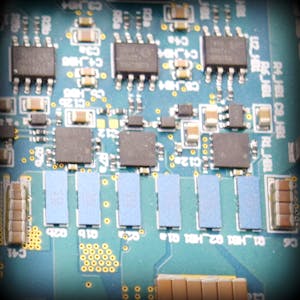Book Review: Artificial Intelligence for Power Electronics – A Glimpse into the Future of Smart Power Systems By Ahteshamul Haque, Saad Mekhilef, and Azra Malik (Editors)
Introduction
The fusion of Artificial Intelligence (AI) and Power Electronics marks a transformative shift in how we design, control, and optimize modern energy systems. The book “Artificial Intelligence for Power Electronics – A Glimpse into the Future of Smart Power Systems”, edited by Ahteshamul Haque, Saad Mekhilef, and Azra Malik, captures this exciting convergence with clarity and technical depth. Published by Wiley-IEEE Press, this comprehensive volume provides a structured journey into the evolving landscape of smart power systems driven by AI and machine learning.
Overview of the Book
The editors have curated a multidisciplinary collection that balances both theoretical foundations and practical implementations. Spanning approximately 400 pages, the book explores how AI techniques such as machine learning, neural networks, optimization algorithms, and data analytics are being applied across various domains of power electronics.
The early chapters introduce the fundamentals of power electronics and discuss the major challenges in designing efficient converters, motor drives, and renewable energy systems. The text then transitions into the role of AI—explaining how data-driven methods can improve control strategies, fault detection, performance optimization, and predictive maintenance.
Key Topics Covered
The book systematically walks the reader through a wide range of topics, including:
-
AI Fundamentals for Power Engineers: Basics of supervised, unsupervised, and reinforcement learning, and their relevance to control systems and circuit optimization.
-
Data Management and Processing: Handling data collection, cleaning, normalization, and dealing with missing or inconsistent data for training robust AI models.
-
Optimization Algorithms: Application of metaheuristic algorithms such as Particle Swarm Optimization, Genetic Algorithms, and Ant Colony Optimization to improve converter performance and control.
-
Fault Detection and Diagnosis: Using clustering, classification, and pattern recognition methods for early anomaly detection in power converters and drives.
-
Hardware and Tools: Practical examples that show how to implement AI algorithms using Python, MATLAB, and embedded platforms like Raspberry Pi.
Each chapter includes case studies, worked examples, and end-of-chapter questions—making the text suitable not just for research but also for teaching and self-learning.
Strengths of the Book
-
Comprehensive and Balanced Coverage
The book bridges the gap between AI theory and real-world power electronics applications. It provides both the conceptual clarity and technical rigor needed for engineers and researchers. -
Practical Implementation Insights
Beyond algorithms, the book delves into hardware considerations, real-time control, and software tools, making it highly relevant for practicing engineers and graduate students. -
Up-to-Date and Forward-Looking
The editors include current topics such as wide-bandgap semiconductors, digital control, smart grids, and renewable integration—highlighting the direction in which the industry is heading. -
Educational Value
The structure—with summaries, exercises, and Q&A sections—makes it an excellent textbook for university courses in power electronics, control systems, or smart energy systems.
Areas for Improvement
While the book is thorough and well-edited, a few limitations are worth noting:
-
Rapid Evolution of AI:
The field of AI is advancing at an incredible pace. Some algorithms and methods discussed may soon be supplemented by newer, more efficient techniques. -
Computational Aspects:
Although the book introduces implementation, readers looking for in-depth coding or deployment examples may find the coverage somewhat introductory. -
Interdisciplinary Depth:
The intersection between AI, power systems, and embedded hardware could benefit from deeper treatment—especially in areas like edge AI and federated learning for decentralized power management.
Who Should Read This Book
This book is ideally suited for:
-
Graduate students and researchers working in power electronics, smart grids, or renewable energy systems.
-
Practicing engineers seeking to integrate AI/ML-based control or optimization into their power converters or drives.
-
Educators designing courses on intelligent control systems or data-driven power applications.
-
Industry professionals exploring how AI can enhance efficiency, reliability, and predictive capabilities in power electronics.
Conclusion
Artificial Intelligence for Power Electronics – A Glimpse into the Future of Smart Power Systems is a timely and insightful contribution to the power electronics community. It not only explains how AI can improve existing systems but also inspires readers to envision a future where power converters, drives, and grids operate with self-learning intelligence.
The editors—Ahteshamul Haque, Saad Mekhilef, and Azra Malik—have done an excellent job of assembling a forward-looking guide that bridges traditional power electronics with emerging AI-driven techniques. For those who want to stay ahead in the era of smart energy systems, this book is both a valuable reference and a source of inspiration.
Harcopy: Artificial Intelligence for Power Electronics
Author: Eeupdate
Technical Reviewer and Electronics Design Enthusiast

























No comments